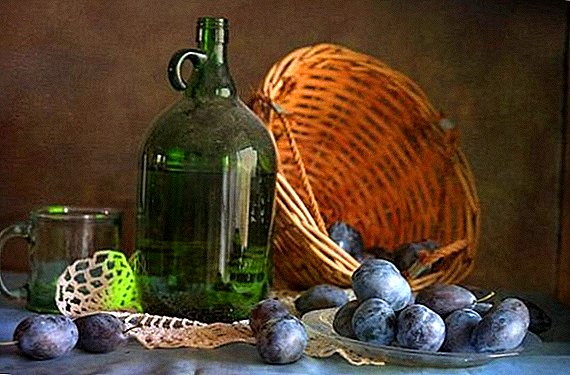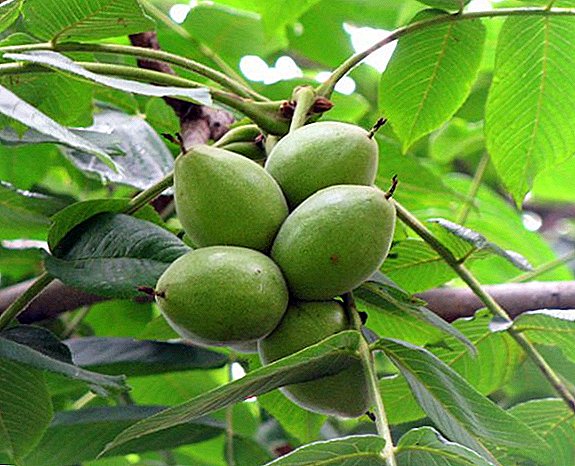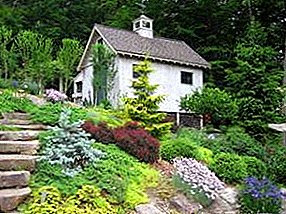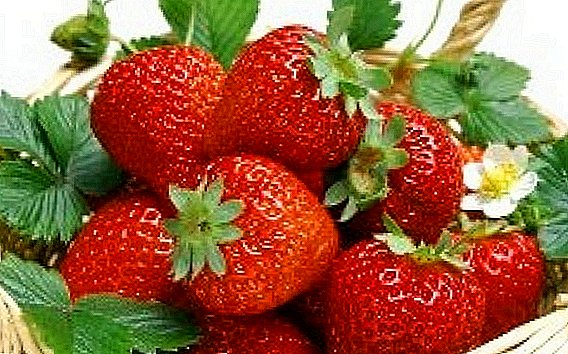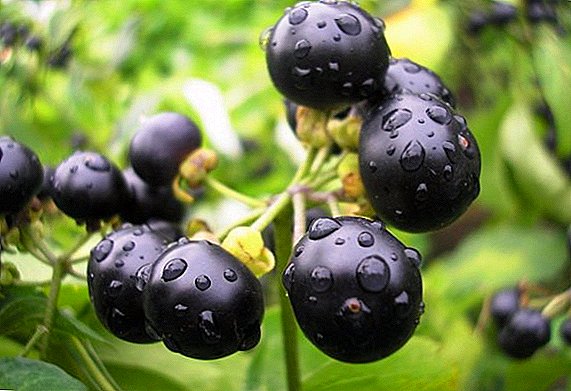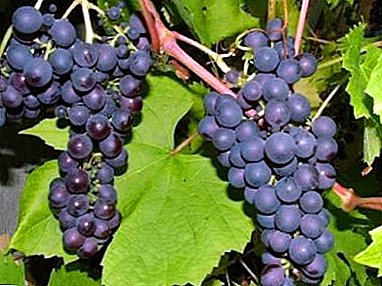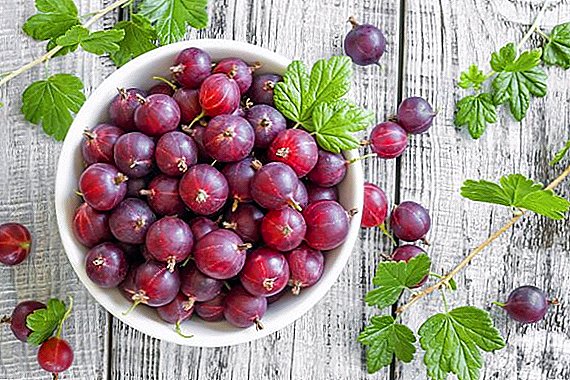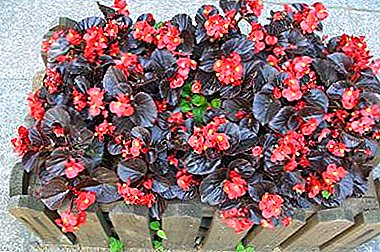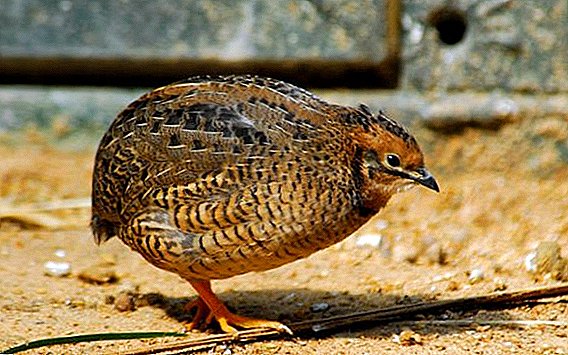 Japanese quails are hardy and highly productive poultry that are successfully kept in small cages and are ubiquitous. The processes of breeding, maintenance and care of them are not particularly difficult - any novice farmer can easily cope with them.
Japanese quails are hardy and highly productive poultry that are successfully kept in small cages and are ubiquitous. The processes of breeding, maintenance and care of them are not particularly difficult - any novice farmer can easily cope with them.
Description and Features
The period of domestication of the Japanese quails fell on the XI century - in the Land of the Rising Sun they were bred as a decorative ornament of wealthy farms. And only in the XVI century, farmers paid attention to the taste of meat and the nutritional value of eggs obtained from the maintenance of beautiful miniature birds.  This breed is considered the oldest among the other bred varieties, but it still remains relevant and does not lose its leading position among breeders of all countries.
This breed is considered the oldest among the other bred varieties, but it still remains relevant and does not lose its leading position among breeders of all countries.
Did you know? In nature, quails can live up to 8 years, at home - only 2-3 years. Over time, the meat of the female becomes tough, and after a year of life, it begins to produce less and less eggs, so it is more economical to grow the bird for only the first 2 years, and then feed it to meat.
Appearance and physique
Species features of the species are elongated, elongated torso, short wings and tail. The color of the feather as a whole is spotty, gray-black, the breast plumage is brown in the male, and light gray in the female. Also, the floor of quails can be distinguished by the color of the beak (in males it is darker) and the cloacal gland of bright pink color, which females do not have at all. 
Productive characteristics
There are two subspecies of Japanese quail: egg-laying and broiler (meat).
Egg quails are highly valued for their productive characteristics:
- the average bird weight is 150-180 g (the female is 138-150 g, the male 115-130 g, the net weight of the carcass is 80 g);
- active egg production starts at 45-50 days;
- more than 300 eggs per year weighing 10-12 g
The Japanese broiler meat direction is significantly different in weight of the carcass, reaching in size more than 250 g, as well as the ability to carry eggs - no more than 220 pieces per year (weight 8-10 g).
Read more about the breeds of Japanese quails: the breed of meat productivity Pharaoh, Manchu and Estonian breeds; and also about other types of quails (ordinary, Chinese painted).
Necessary conditions of detention
Breeding and maintenance of this breed can be considered a simple task, but a beginner or an experienced farmer will still need some knowledge. First of all, the birds should organize a suitable room, based on the characteristics of their body, nature and diet. 
Requirements for the room
The room (poultry house), in which quail cells will be located, must necessarily meet such requirements:
- Lighting. Japanese quails do not tolerate bright light, but they cannot be kept in complete darkness either. The best option would be one or two windows in a room with cells located a few meters away from them. The length of daylight during egg-laying is 15-17 hours, the intensity of light is not higher than 4 W per 1 square meter. m
- Temperature conditions. It is extremely important not to allow strong fluctuations in air temperature, the norm is 18-21 degrees.
- Air humidity in the house should not exceed 70%. If the rate is too high, mold and pathogenic bacteria that can infect quails and eggs can develop inside the cells.
- Ventilation. An important role in the proper maintenance of the "Japanese" is played by the organization of round-the-clock ventilation with the help of windows or special holes in the roof. However, the cells should not be exposed to any drafts.
Important! With the increased brightness of the light, the birds will begin to peck at each other and fight. Stressful situation will negatively affect the future egg production.
It is also desirable to exclude access to the poultry house of any domestic animal life - cats, dogs, etc. They can scare the birds and reduce their egg production. 
What should be the cells
Multi-tiered cages made of wood or iron are very popular among Japanese quail farmers.
Learn more about making a cage for quail.
The requirements for their arrangement are:
- The height of the "dwelling" should vary from 20 to 25 cm, this will exclude trauma to the birds and allow them to feel free. The total area of the bottom is 50x25 cm.
- Landing density should be 100-125 square meters. cm on one individual (in a cage with a length of 1 m and a width of 50 cm can be populated about 50 quails).
- It is advisable that the floor covering of the house should be covered with straw, large sawdust or hay, which should be changed every one or two days.
- On the outside of the cage, it is necessary to install nipple drinkers and feeders, so that the birds reach them with their heads between the rods.
- Inside is a spacious tank with dry sand (5-7 cm thick) in which Japanese quails like to bathe.
- A special egg-collector, as a rule, is a mesh bottom, installed at an angle of 10 degrees towards the front wall of the dwelling. The design itself should protrude 10 cm and have sides.
- Under the quail cage, it is imperative to place a galvanized iron tray to collect litter, which can be filled with regular cat litter to absorb odor.

What to feed adult quail
Feeding adults should be carried out at certain times three times a day. For the full development and productivity of the daily feed rate should not be less than 25-30 g per head. The diet of birds must necessarily consist of a large amount of protein, vitamins and minerals.
Balanced and nutritious food can be purchased in a special store or make yourself from crushed cereal mixtures: Barley, corn and wheat.
Periodically, the menu should include chopped boiled liver, sea fish and fresh chopped greens.
Important! Some foods are strictly forbidden to eat Japanese quails: sorrel, rye, buckwheat, tomato and potato tops, tansy.
Separately near the trough, the farmer must attach bowl with small pebbles or coarse sand to maintain the proper digestion of quail. 
Breeding chickens at home
Unfortunately, numerous breeding crosses, during which this breed was bred, finally destroyed the maternal instinct of the Japanese quail, therefore large and private farms use an incubator to get healthy chicks.
Quail Egg Incubation
In successful incubation and in obtaining healthy and viable offspring, the purchase of eggs in proven farms, as well as their thorough inspection and selection, play an important role.
Tips for poultry farmers: choosing an incubator, characterizing the best.
Required parameters for their selection:
- correct form;
- medium pigmentation;
- large size (10-14 g);
- purity;
- ratio of smaller diameter to larger 70%.
After careful selection and immediately before laying the eggs should be disinfected with a light solution of potassium permanganate.  The laying of products in the incubation trays should be made vertically, with a blunt end up. Optimum temperature and humidity installed a few hours before the start of the process, and in the future are constantly maintained at the level corresponding to the day:
The laying of products in the incubation trays should be made vertically, with a blunt end up. Optimum temperature and humidity installed a few hours before the start of the process, and in the future are constantly maintained at the level corresponding to the day:
- From the 1st to the 7th day, the temperature is 37.5 ° С, the humidity is 52-57%. Grilles should be turned 4 times daily;
- From the 8th to the 14th day, the temperature is 37.5 ° С, the humidity is 42-44%. Egg flipping - daily, 5 times;
- From the 15th to the 17th day, the temperature should be reduced to 35 ° С, the humidity should be increased to 75%. The embryos are almost completely formed and are about to be born. It is already impossible to turn the eggs.
We advise you to read about making an incubator for quails with your own hands.
Newborn quails, as a rule, hatch together within 5-6 hours, on the 18th day.
Video: newborn quail chicks
Nursing care
After hatching, Japanese quails are left in the incubator for another 12 hours for complete drying, after which they are transferred to a prepared brooder.
Good prevention of many dangerous diseases will otpaivaniya young stock special veterinary drugs:
- On the first day of life, chickens should be given clean water with sugar (for 1 liter of water, 2 tablespoons) and ascorbic acid (0.5 ml);
- From the 2nd to the 7th day, enrofloxacin-based preparations are administered;
- On the 7-10th day, the complex of vitamins is introduced according to the instructions (Aminovital, Chiktonik);
- after a month of life, quails are prevented from using special preparations for salmonellosis and histomoniasis.
Learn more about breeding quail at home: the content of quail laying hens; keeping quails in winter; how many eggs does the quail carry and what does the egg production depend on?
Feeding ration
AT first days Japanese chicks are gradually fed with chopped quail egg, cottage cheese and chopped greens (nettle, carrot or onion feathers). WITH the third day Boiled lean fish and sour milk are introduced into the diet.  The number of feedings in the first week should be at least 5 times, later the frequency is reduced to 3.
The number of feedings in the first week should be at least 5 times, later the frequency is reduced to 3.
After 10 days of life, new products are gradually added to the diet of young stock:
- yellow corn - 30% of the total diet;
- dry milk - 6%;
- ground shells - 2%;
- fish meal - 12%;
- meat and bone meal - 12%;
- wheat - 30%;
- salt - 0.2%.
Learn how to build a variety of quail feeders.
Advantages and disadvantages
The main advantages of growing and maintaining Japanese quail are:
- easy growing process;
- minimum time spent on bird care;
- a short incubation period compared to other poultry - only 18 days;
- nutritional value, a complex of vitamins and minerals contained in diet quail eggs and meat;
- rapid growth and maturation of birds (maturity comes already on the 40-50th day);
- high resistance to various avian diseases.
 Disadvantages:
Disadvantages:
- Japanese quails are sensitive to temperature extremes and stress;
- after breeding, it may be difficult to establish distribution channels for products.
Did you know? Since ancient times, quail eggs have been successfully used in traditional medicine and cosmetology. The valuable product is indicated in diseases of the gastrointestinal tract, gallbladder, anemia, tuberculosis, cataracts and bronchial asthma. Egg-based masks improve skin color and make hair strong and shiny.
Video: Japanese quail content experience
If all conditions of keeping Japanese quails are observed, in the end it is possible to get not only high-quality egg and meat products, improving health, but also simply beautiful birds that serve as a decorative ornament in the home yard.


